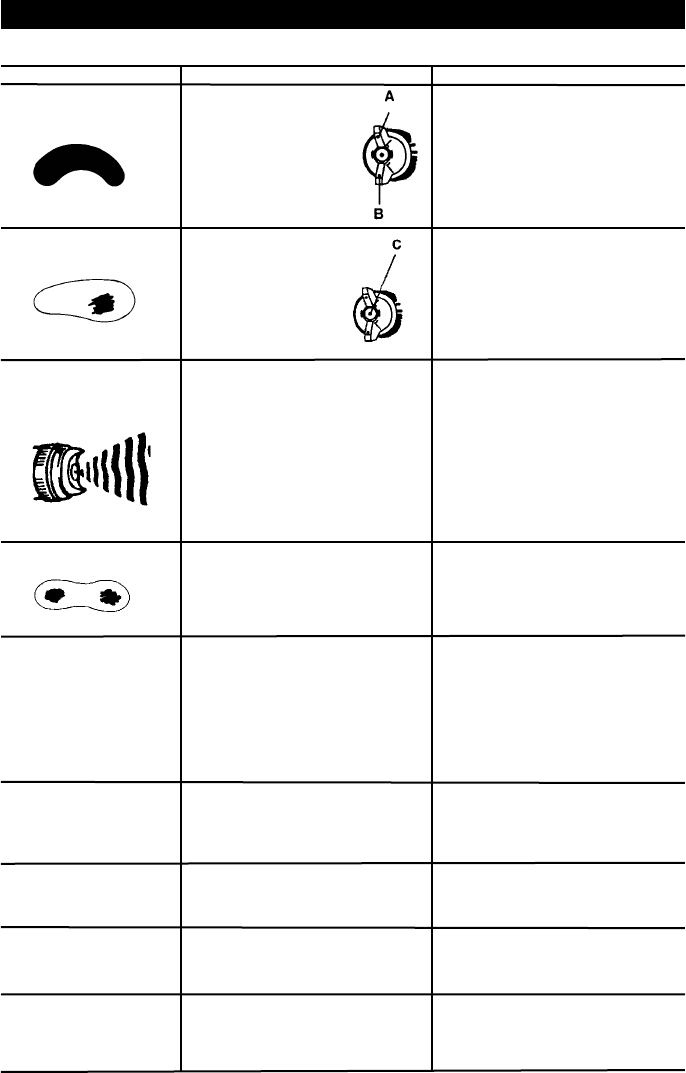
6- ENG
D25800
Dried ma te ri al is clog-
ging side-port “A” and
causing side-port “B”
to blow spray towards
the clogged side
A.
Soak side-ports in thinner to
clean clog. DO NOT poke any
opening with hard objects.
B.
Dried material at fluid
nozzle “C” restricts air
flow
Loose air nozzle
Air pressure set too
high
Remove air nozzle. Wipe off fluid
tip using a cloth soaked in thinner
or by soft brush
Fasten nozzle securely
Reduce air pressure
C. Spitting, ir reg u lar
or fluttering spray
Fluid nozzle cracked or worn
Leak at thread of fluid nozzle
Leak at fluid needle
Needle packing worn out
Insufficient fluid in cup
Vent hole in container cover
clogged
Tighten or replace
Tighten fluid nozzle
Tighten compression nut
assembly or replace needle
packing
Replace packing
Fill cup with fluid
Clean Out
D. Split spray pattern
Air pressure too high
Turn pattern control knob
clockwise to decrease fan width.
Turn fluid needle adjusting nut
coun ter clock wise to increase fluid
flow
Material too heavy
Insufficient air pressure
Fluid pressure too high
Dried material on tip of fluid noz-
zle or air jets of air cap
Thin material or use larger orifice
fluid nozzle set
Increase pressure to within limit
Reduce pressure
Clean
Air needle partially closed
Dried material in air jets or air cap
Obstruction in air line
Remove obstruction
Reduce air pressure and/or open
fluid control knob
Air pressure to high for viscosity
of fluid
Loose cup or foreign sub stanc es
on/between cup thread and fluid
inlet
Tighten and clean or replace it
F. Inadequate air de liv-
ery
E. Unatomized or
spat tered spray
G. Excessive fog
I. Material leaking
from nozzle when
trigger is released
H. Material leaking
from fluid inlet of
cup.
Worn fluid needle
Dried material in tip of nozzle
Loose packing nut
Replace
Clean
Tighten needle packing nut by
turning counterclockwise
Defective Pattern
Likely Cause Suggested Remedy
TROUBLESHOOTING
Open control knob
Clean
NOTICE: See parts list to identify parts referred to in these Troubleshooting steps.










